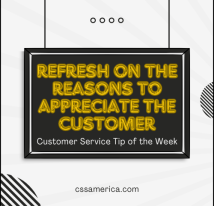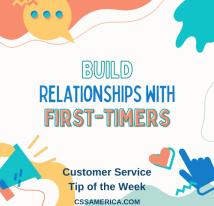
If you’ve ever watched the TV sitcom called Friends, you may remember that one of the characters was named Ross. In one episode, he is trying to educate some of his female friends (who just took a self-defense course) on a concept he calls Unagi. Basically, to Ross, this is a concept that would help him anticipate when he was about to be attacked. Once attacked, then he could use his karate. Of course, Ross got his terms confused; he should have said Zanshin; instead he used Unagi – a Japanese word for freshwater eel.
Ross also wasn’t particularly good at Unagi or karate, as later in the episode his Friends “attacked” him when his Unagi failed, and they got him in a submission hold.
In the world of customer service, it would be great if we had Unagi. It would be great if we had some kind of a radar that could anticipate that customer who is going to attack us or bully us into getting what they want.
Unfortunately, for the most part, Unagi does not exist. However, these are 3 different tactics to consider when you’re faced with a customer potentially trying to bully his way to a particular outcome:
Restrain – Hold back on the urge to verbally fight back with personal attacks against the customer, blaming them for things that have happened in the situation. Once we heighten our emotional level and try to match theirs, usually we’re going to end up having a situation get even worse. Restrain a little bit instead of reacting with defensiveness and our own personal feelings.
Redirect – Consider ways to get the conversation away from the personal attack and away from their solutions to focus more on a scenario where you are redirecting the conversation by asking questions. You’re trying to learn details. You’re trying to understand specifics, and all the while by asking your questions you’re not only getting the conversation to focus on what you want to focus on, but you’re also taking control of the conversation.
Recuse – At some point, the conversation gets too heated; it’s too personal; you may need to recuse yourself from the conversation. This does not mean to ignore the customer and the issue. What it does mean is that sometimes it’s best to bring in a co-worker, bring in a supervisor, bring in somebody else and recuse yourself from the situation. Oftentimes that mere pause for the handoff can deescalate the emotions. By bringing in someone else, it gets the focus off of you and the dynamics with you and the customer. Sometimes the customer feels they’re making progress through a resolution process by viewing the next person (especially if you position the handoff this way) as a key next step in the process.
Why you might not have Unagi, find ways to restrain, redirect, and – if necessary – recuse yourself when you’re dealing with the attacking customer.
Signup for FREE Tips! Contact Us More Resources for You Visit Our Home Page























